Historically, Bangladesh was connected by its waterways. Passenger boats known as ‘launches’ were a major form of public transport in Bangladesh, particularly to cities in the south of the country. However in recent years the construction of a number of bridges across the country’s vast river network has greatly reduced road travel times. While the idea of chugging along on a rickety, overcrowded boat might still be appealing to some visitors, it is now much easier, cheaper and faster to get around the country by bus and launches are pretty much obsolete as a practical means of transport.
Like other countries in the Indian subcontinent, Bangladesh also has quite an extensive train network dating back to its time as part of the British Raj. Despite this, getting around Bangladesh can still be a little difficult at times. Check out this guide to public transport in Bangladesh based on my own experiences in the country!
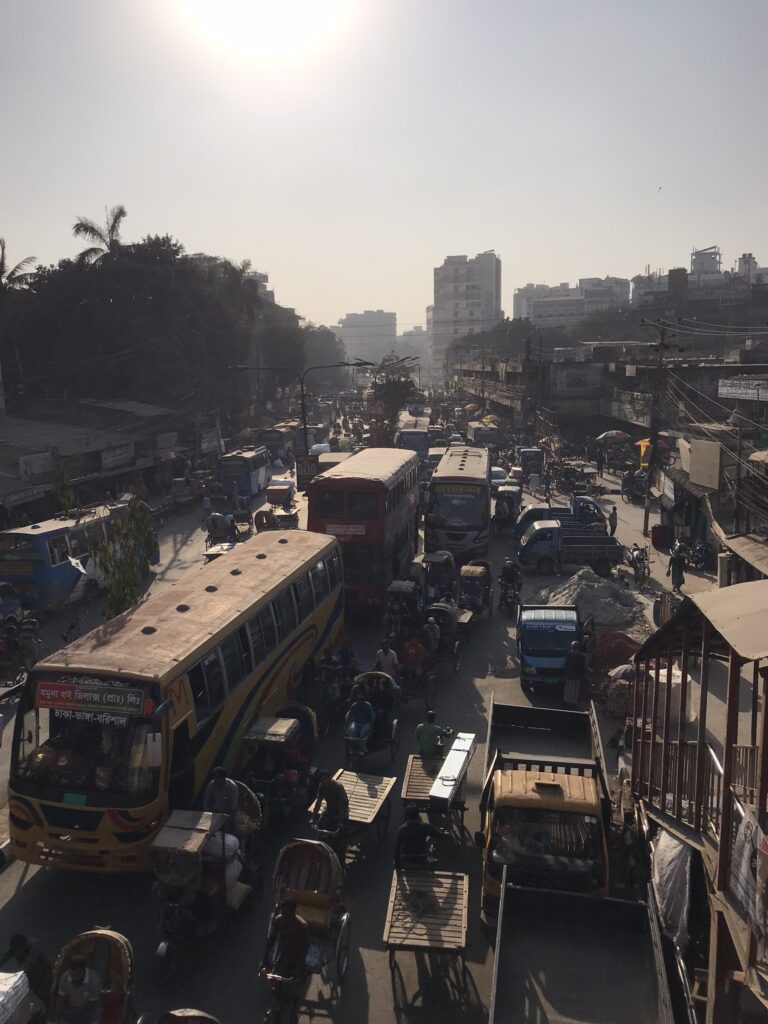
The majority of bus and train routes in the country run to or from Dhaka. This means that if traveling between two destinations other than Dhaka, you will probably either need to change at Dhaka or find a route that passes by your destination so that you can get out along the way. All internal flights also operate either to or from Dhaka. There are no direct air connections between other cities. Although it is centrally located, constantly transiting via Dhaka can be a pain for those with more limited time or budget. For this reason, we ended up having to skip Cox’s Bazar and the south-east of Bangladesh altogether.
Finding accurate schedules and information online can also be an issue. There are a number of websites that claim to sell bus or rail tickets, but very few of them seem to work properly. We were able to access train time from a Bengali-language schedule using what seems to be the official Bangladesh railways website, but the website doesn’t work outside of Bangladesh. This didn’t make a difference in the end as we still ended up waiting for hours at the station when our train was badly delayed. Buses and flights are also often delayed.
Despite the relatively short distances involved, if you want to travel intercity in Bangladesh then I recommend dedicating a whole travel day and not planning anything else for that day. You might arrive much quicker than expected, or much later; it can be a complete lottery at times.
Buses
Bus travel was our method of choice to get around Bangladesh during our time in the country. Regional and intercity buses are both very frequent in Bangladesh. The buses are dirt cheap, in most cases are in decent enough condition and can be surprisingly comfortable. Usually the intercity buses are a typical coach style with a luggage compartment and reclining seats. Most of the intercity buses you will find are usually heading to Dhaka. If your destination is Dhaka or somewhere along the route, then you are in luck. If not, you may still be able to get a bus between other cities but you will need to ask around as these are usually far less frequent.
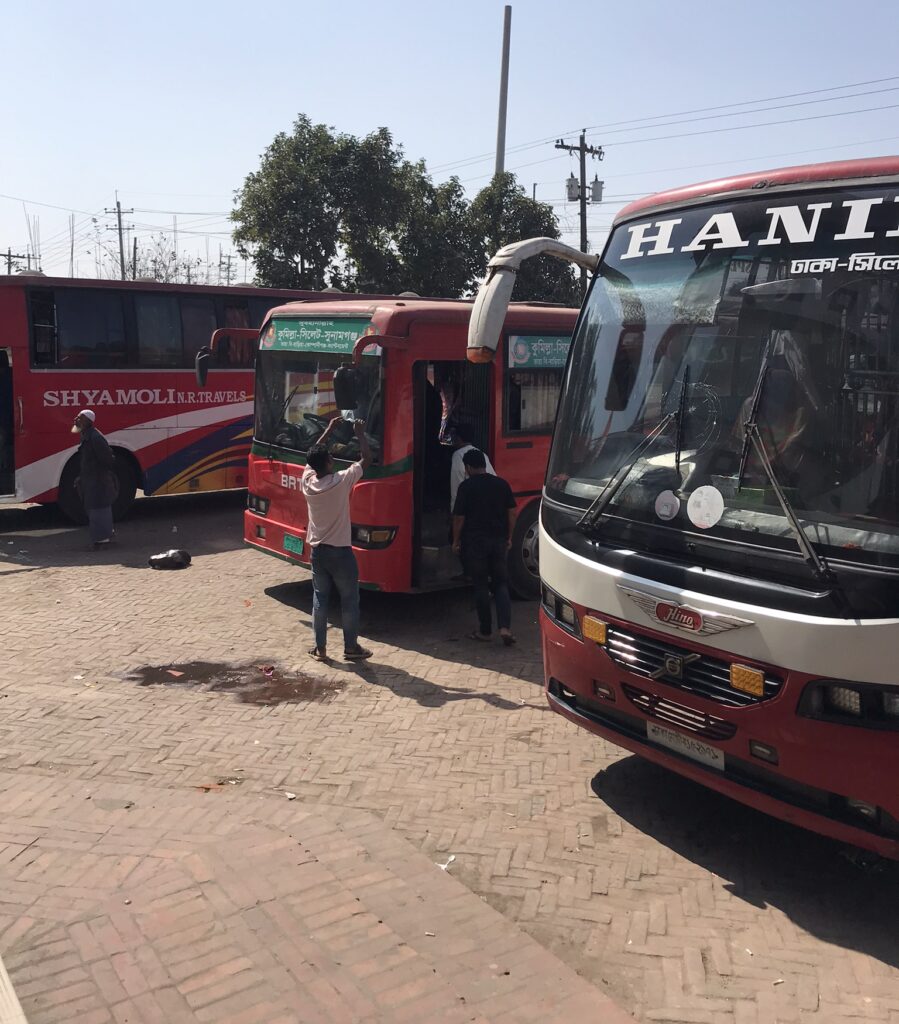
Hanif Enterprise was a company that we used regularly, the service and the buses themselves were fine
The worst thing about bus travel in Bangladesh is the driving. Riding the bus in Bangladesh can be a truly hair-raising experience and it’s probably better not to look out of the front window if you want to maintain your sanity. I’m still not sure if Bangladeshi bus drivers are the worst or best drivers in the world. These guys drive their buses like go-karts, flying through narrow gaps at top speed, accelerating wildly around blind corners, overtaking on the wrong side of the road on busy highways and just blaring their horns at any and all oncoming traffic to get out of the way instead of even thinking about braking.
This behaviour isn’t confined just to one bus driver or one company, every single bus we took in Bangladesh was driven in this way. Quite a few times we witnessed locals vomiting on the bus, no doubt due to the unhinged driving. I don’t know what the figures are like for traffic accidents involving buses in Bangladesh and honestly I don’t want to know. We were thankful every time we made it out in one piece.
Booking the bus
Buses in Bangladesh are centred around areas known as stations, but these aren’t bus stations in the traditional sense. Most of the time they aren’t even glorified car park areas like in some other countries. In Bangladesh they are usually just chaotic road junctions, sometimes spanning a few blocks and sometimes coupled with a huge marketplace. Most large cities have more than one ‘station’.
Usually there doesn’t seem to be much rhyme or reason to these places, just masses of buses absolutely everywhere along any number of main and side roads in the area. It can be unclear which buses are about to depart, which are just parked up and what exactly is going on. Luckily the stations are usually swarming with people who are eager to help out and get you to the right place if you ask.
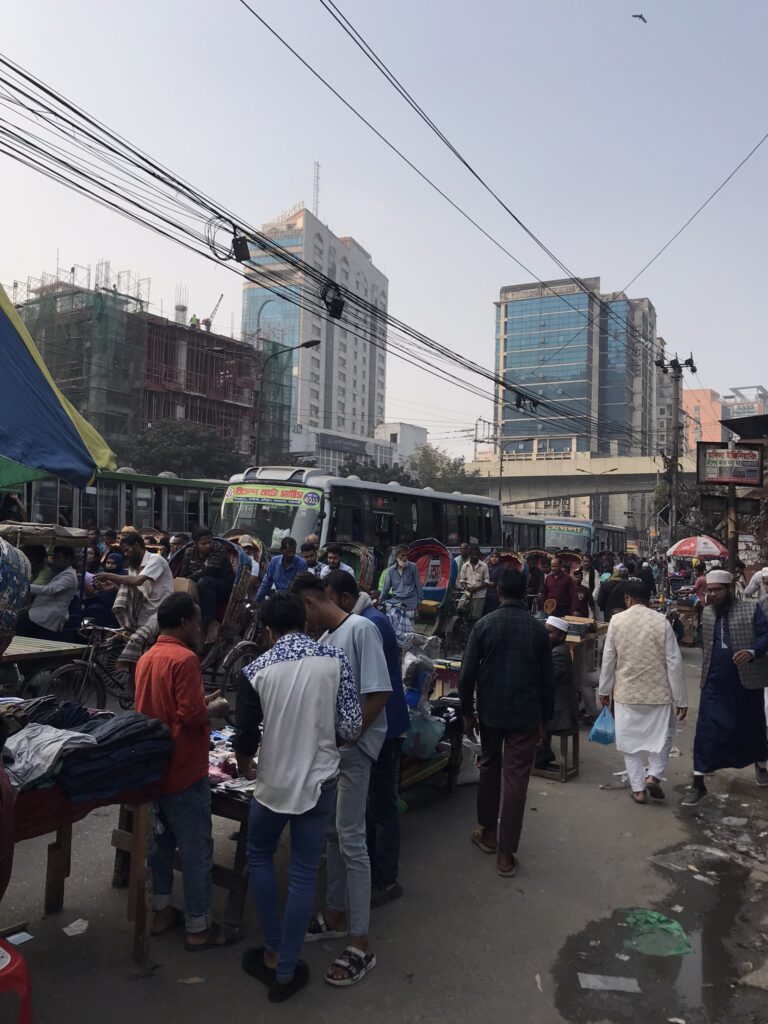
Dhaka’s Gulistan – a classic overcrowded, chaotic ‘bus station’
Because there are usually multiple bus stations in one city, the stations are usually named after their neighbourhood. For example, when traveling to Dhaka we asked for ‘Gulistan’ and when traveling to Khulna we asked for ‘Sonadonga’. When booking tickets it is very helpful to know the station name you’re aiming for rather than just the city. If you don’t specify which station you are heading to, you might end up somewhere miles out of town.
Ticket offices for various bus companies can be found along the roadside at most of the stations. Usually the signs for the ticket offices are written solely in Bengali script, but you can sometimes identify the correct company by their logo or a picture of a bus alongside the text on the sign. The major bus companies such as Hanif Enterprise, Shyamoli, Green Line, Sakura usually have ticket offices at most bus stations.
Usually the offices for the major companies are decent enough, with a small waiting area and at least one ‘bus guy’ working as a ticket seller. For more local buses, sometimes there is no physical office – instead you might just find a guy in a small kiosk or even just in a chair selling tickets at the side of the road. From our experience, the sellers tended to speak at least some English and were usually pretty helpful. For some reason, whenever we wanted to buy a ticket for the following day these guys always defaulted to offering us a ticket for the earliest available bus; ask for later times if you don’t want to leave at 5am.
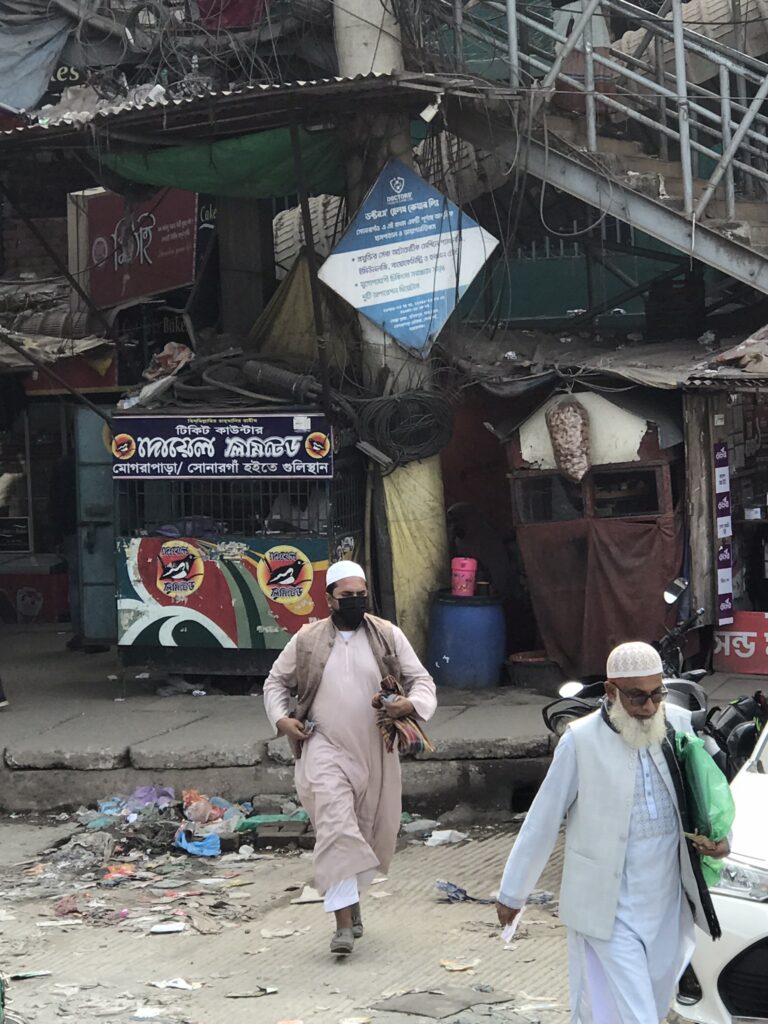
Tickets can often be bought from little kiosks like this one – sometimes there isn’t even a hut!
Major Bangladesh intercity bus companies (the ones with proper offices) almost always ask for a Bangladeshi mobile number for booking, foreign numbers are not accepted. Just ask to use the ticket seller’s number if you don’t have a Bangladeshi number, the bus guys were always happy to do this for us.
The downside is that obviously if using the seller’s number you won’t receive the digital ticket confirmation on your phone, and also won’t be informed if the bus is delayed or cancelled. This only caused us a problem once, when our BRTC bus from Khulna to Barisal was cancelled and we had to wait a few hours for the next one. Luckily we were able to exchange our ticket on the spot and the station was close enough that we could go back to wait in our hotel, so it wasn’t an issue.
Usually the bus will pick you up from the ticket office or location where you bought the ticket. On some occasions we bought a ticket and were picked up from the office at the scheduled time, only to then be taken to a different bus station and transferred onto a different waiting bus. This was a little confusing but it did always work out in the end, even if sometimes it meant that the journey took much longer than expected.
Most of the time there is really no need to book bus tickets in advance in Bangladesh, especially if you’re traveling a short distance or know that there are frequent departures along the route. We visited Bagerhat from Khulna and Sonargaon from Dhaka just by showing up at the bus station and asking around until someone pointed us to the right bus.
We were also able to buy tickets on the spot for most intercity buses. However because bus schedules and departure times can be hard to come by online, we found that the best thing to do when trying to catch an intercity bus was to go to the bus company office in person a day before to ask if the bus was running from that location, find out the departure times and then also buy a ticket if possible. Although things might change on the day, it pays to be prepared and at least have a rough idea of what is going on.
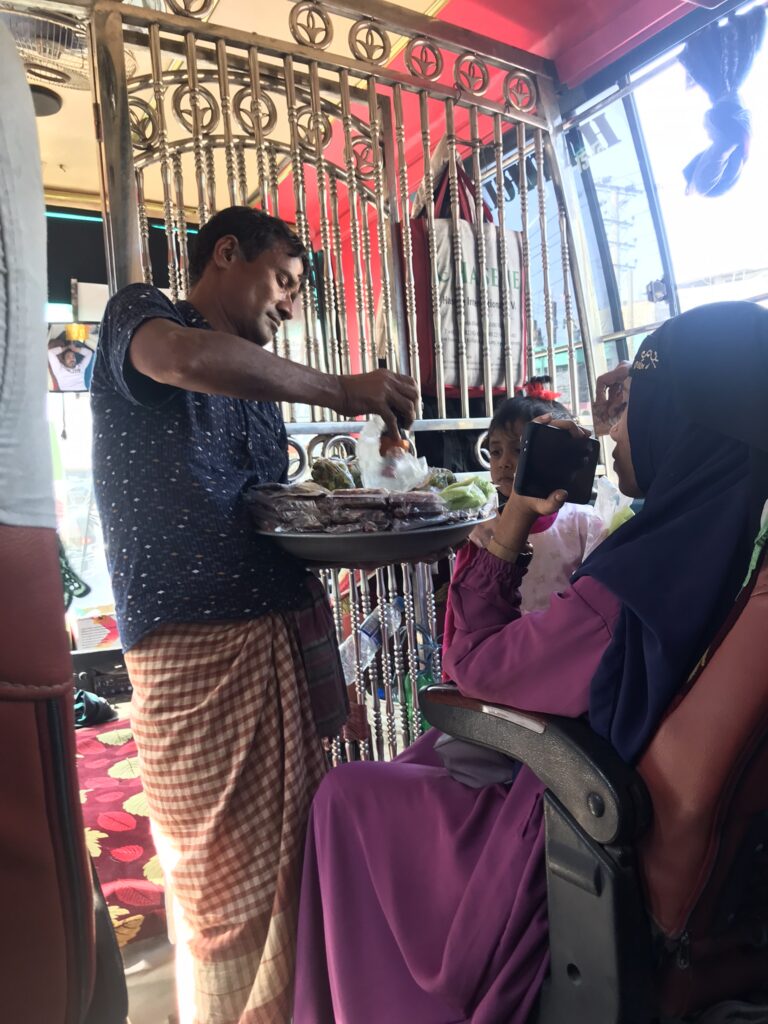
Vendors sometimes board the bus but they aren’t annoying or overbearing
Overall, I can’t really complain about the bus travel in Bangladesh particularly given the very low prices. Companies such as Hanif Enterprise, Green Line and Sakura are well-established and seemed professional enough in their operation. Other than the crazed and manic driving, we didn’t really have a bad experience with any of them. We also found that there were usually plenty of bystanders who were eager to help us with both the booking process and the journey itself.
Trains
Because reliable info on train timetables is so difficult to come by, we only used the train once in Bangladesh; to travel between Sreemangal and Sylhet (strangely no buses cover this route so train is the only option). The online railway ticketing service is useless and I don’t recommend trying to use it – just go to the station and buy a ticket in person. We were able to buy a reserved train ticket really easily in person from the station in Sreemangal the night before we wanted to go. The reserved ticket included a specific seat number and departure time for the following day.
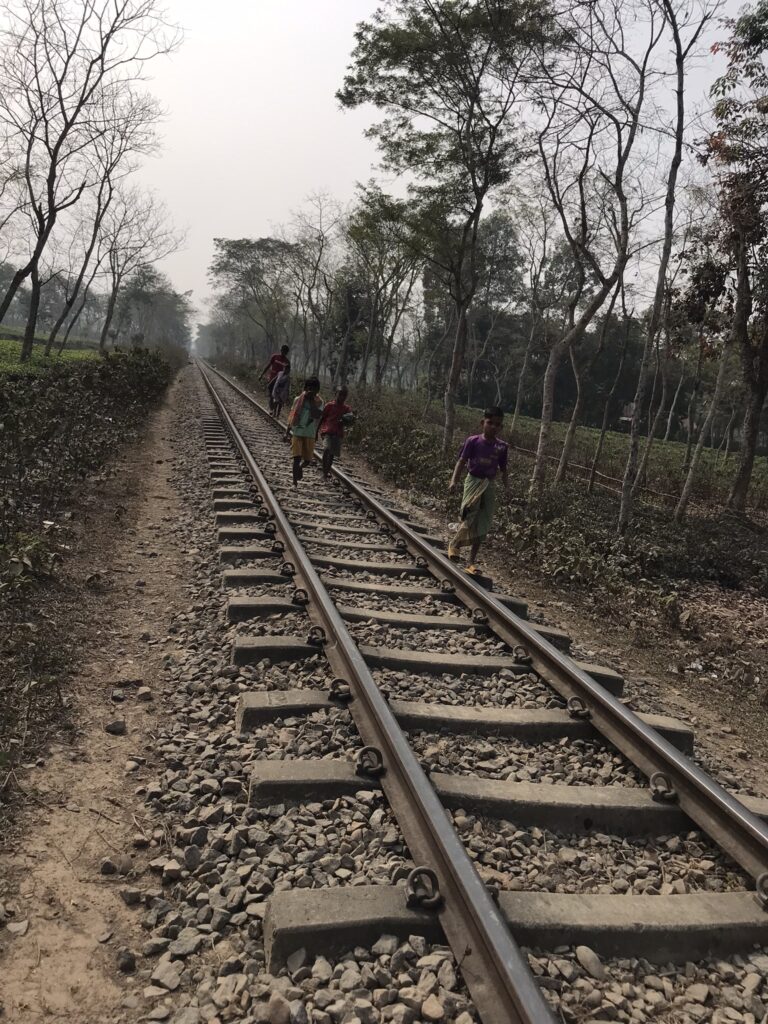
Railway lines run through the tea country in Sreemangal
The station in Sreemangal is quite small and many curious and friendly locals wanted to talk to us on the platform while we waited for the train. We had a nice chat with a local female dentist who told us that it was very common for the trains to be delayed. Unfortunately she was right as our train was delayed by several hours. When the train did arrive, we found it difficult to locate our carriage as the carriage numbers and classes were all written on the train in Bengali script. We had to ask several people for help and the train almost departed before we were able to board.
The layout of the train was interesting. We were in a private sleeper-style carriage with a single bunk bed in a lockable private cabin – the same layout as a first class cabin on soviet-style trains. However in this case the two bunk beds were repurposed into three seats; we took up two of the seats and then a random local guy was also in the cabin with us for some of the journey, which was a bit awkward. The cabin was also quite dirty and didn’t seem to be particularly well maintained but maybe that was just the train we were on.
Most of the info online about train travel in Bangladesh seems to focus on unreserved tickets and trains that are a complete free-for-all, but this wasn’t our experience with the reserved ticket. The ticket was cheap, and apart from being severely delayed the journey was fine and quite uneventful. I can’t say for sure whether this cabin layout and overall experience is common or not as this is the only train we took in Bangladesh.
Dhaka metro
One of the most useful and important forms of public transport in Bangladesh for us was the Dhaka metro. If you’re visiting Bangladesh it is inevitable you’ll end up in Dhaka at some point and the metro is by far the best way to get around the city.
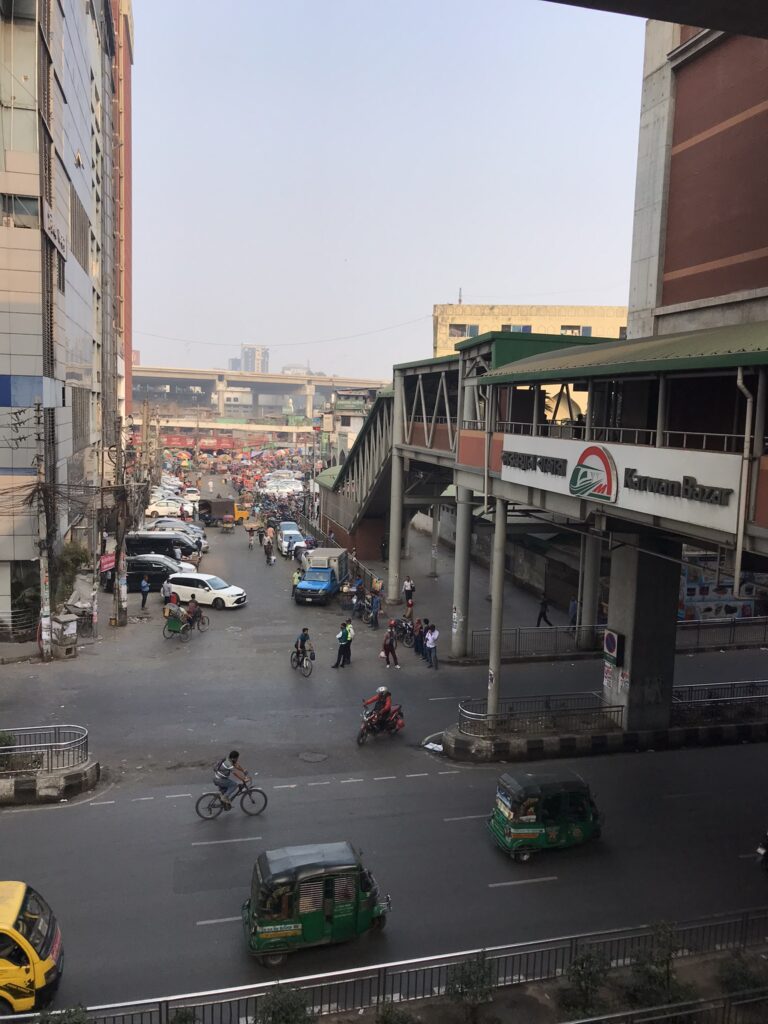
If you’re in Dhaka, use the metro!
The metro only consists of one single line which annoyingly does not go to the airport or directly to most of the main bus stations. It’s walkable from Gulistan, Arambagh and Fakirapool bus stations as well as Dhaka rail station. You can also walk from the metro line to Old Dhaka, it’s a slightly longer walk but this is still by far the best way to access the area from other parts of the city when compared to bargaining for a CNG or cycle rickshaw, navigating the narrow streets and/or sitting in gridlocked traffic.
The metro is quite modern and extremely cheap to ride. Trains are fast and frequent, sometimes they can be a little crowded (no more so than any similar metro in any big city) however there is a women’s only carriage at the front of the train which makes for a more comfortable experience for female travelers. Many helpful locals were eager to try and assist us on the metro, but it really is very simple and easy to use.
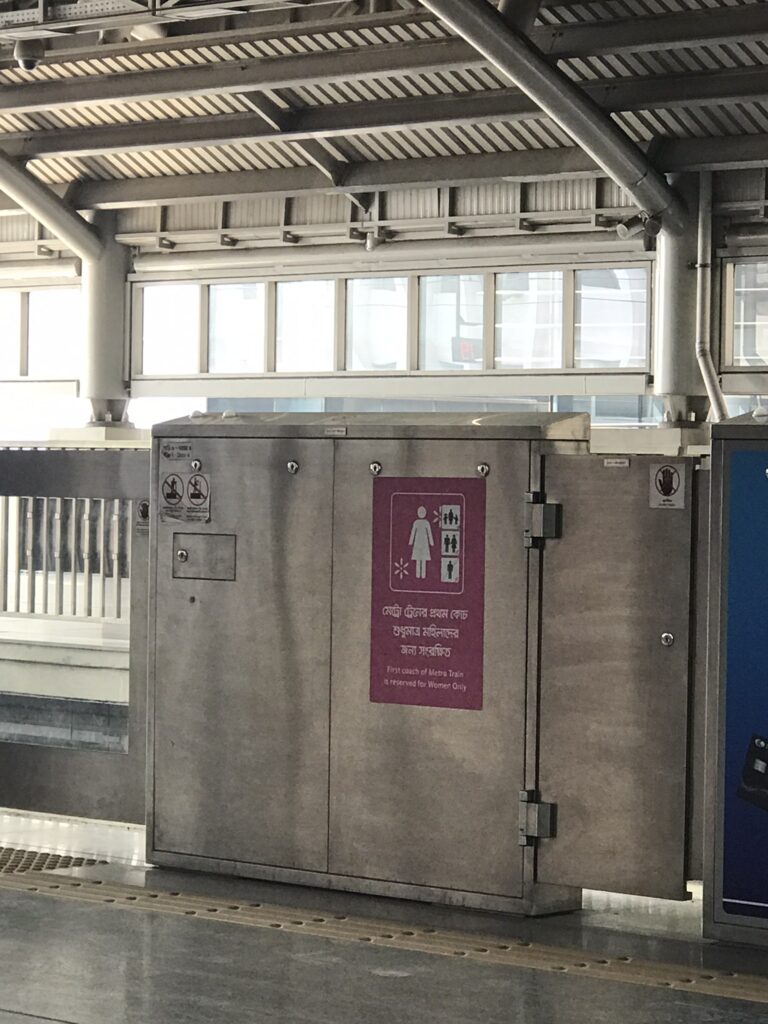
The women’s only carriage at the front is common in South Asian metros and makes for a comfortable and safe journey for ladies
Single-journey tickets can be purchased within the stations via either a manned ticket booth or automated ticket machine, although often at quieter times the booth is not manned and so the automated machines are the only option. The machines are quite self-explanatory and can display text in both English and Bengali. A grid with the fares for each journey can also be found on a piece of paper which is taped to the manned ticket booth. Tickets are purchased with cash and you get a little card which is valid for a single journey. I don’t know if you can buy a day pass or similar, we didn’t ask about this.
Most of the time for us the Dhaka metro worked really well, however there are some quirks that need to be taken into account:
The metro closes for prayers between 2pm and 3pm on Fridays. Stations are physically closed and locked up during this time. Ironically this was the case when we first arrived in the city and tried to use the metro. On that Friday the metro didn’t actually reopen until around 3.30, creating a huge bottleneck of people waiting outside the entrance. If you’re planning to use the metro on a Friday afternoon, expect it to be closed for longer than scheduled and also expect big queues when it eventually reopens.

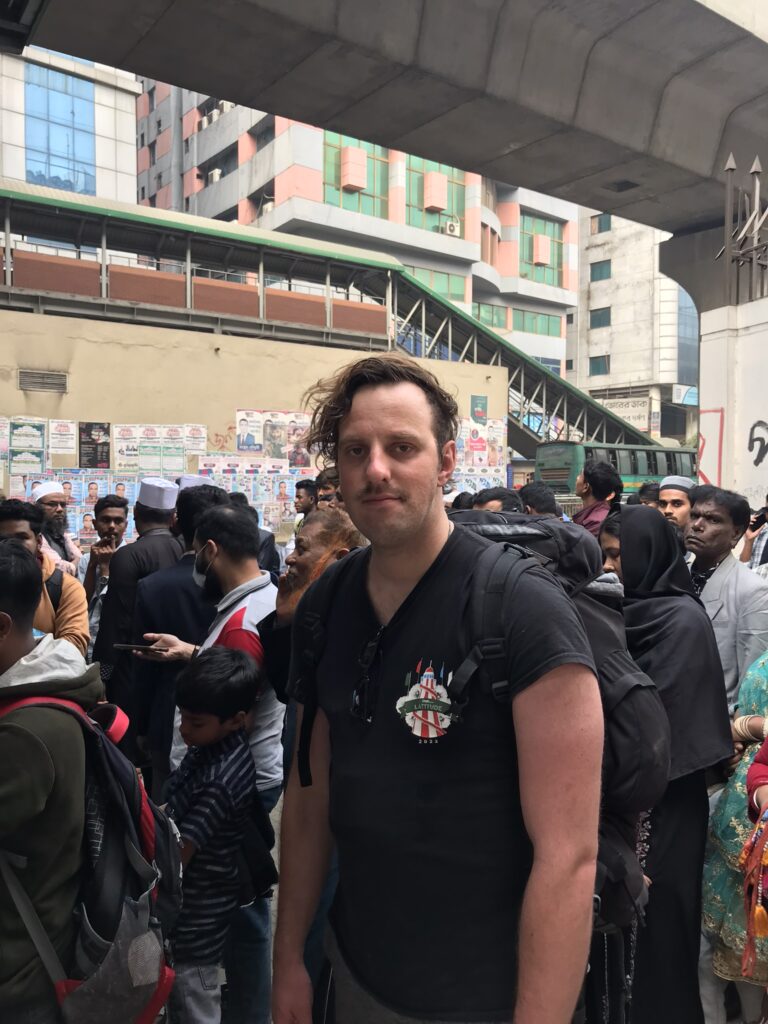
Waiting for the metro to re-open after Friday prayers
Sometimes we experienced difficulties and delays while trying to buy a ticket for the metro. The automated ticket machines are unreliable and often seemed to randomly stop working while we were there. Frequently one or all the machines at the station were out of use and sometimes they would break while people were in the middle of using them, leading to an inevitable gathering of young guys trying to resolve the issue themselves with little to zero knowhow.
There were also some delays caused by local people queuing up for the automated ticket machines only to get to the front of the queue and realise that they didn’t actually know how to use the machines (as the metro is quite new and the only one of its kind in Bangladesh this is most definitely a thing). For these reasons, if there is any sort of queue I would definitely recommend opting for the (human operated) ticket booth rather than queueing for the automated machines.
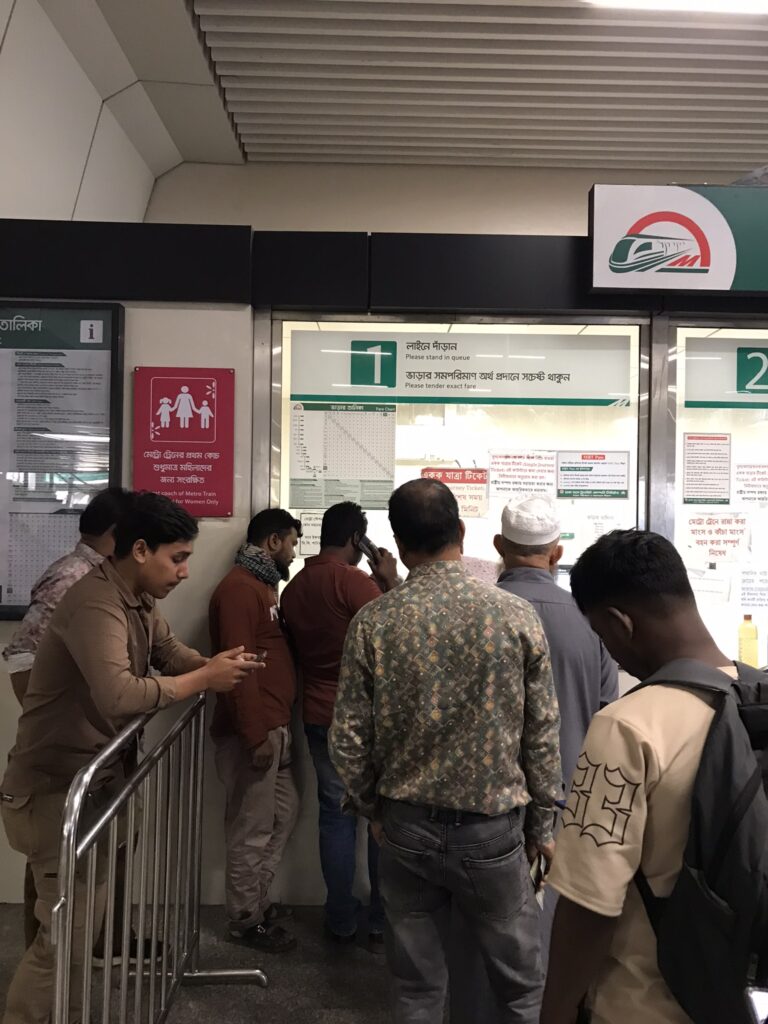
I highly recommend using the human booths if they are manned
We also experienced very long queues to buy a ticket on one occasion at Motijheel station (the end terminus nearest to the rail and bus stations). Again, I think this was a knock-on effect of the closure for Friday prayers. After queueing for almost an hour just to get inside the station, as foreigners numerous locals started trying to intervene to help us in various ways to jump the queue.
Although we rejected their many offers at first, after a while we agreed to an offer from a very kind man at the front of the queue to just buy two extra tickets for us along with his tickets. This guy also refused to accept payment! The kindness and considerate nature of the Bangladeshi people can’t be understated – many people including police approached us telling us to keep our belongings close and warning us about thieves, but we felt totally safe on the metro.
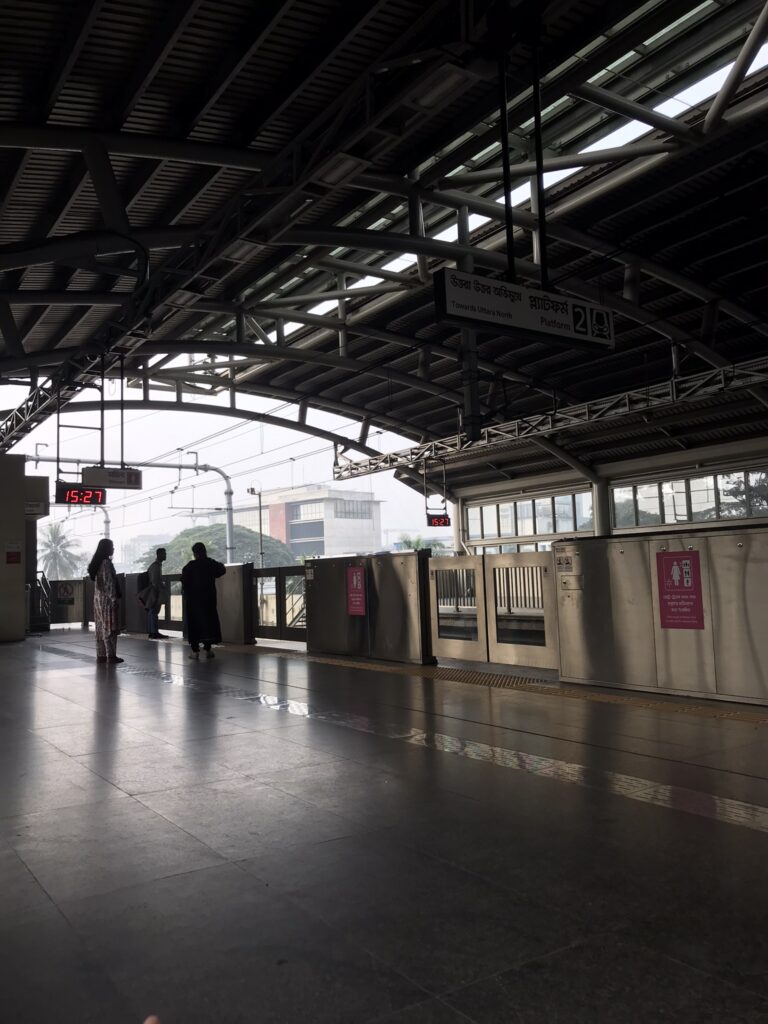
The metro is great once you actually get inside
Hopefully the above teething problems will resolve themselves over time. Regardless, the Dhaka metro was a lifesaver for us. The actual train service ran smoothly every time, the fare is cheap and it is by far the best and most reliable means of transport for getting across the city.
Other
Uber is operational in Dhaka but it doesn’t really work. The driver will inevitably try to call and unless you have someone local to talk to the driver in Bengali then you don’t really have any chance at all. We tried to get an Uber from our hotel to the airport and had to enlist the help of two different staff members to actually get someone to come and pick us up. Sadly, as the metro doesn’t go anywhere near the airport then Uber is pretty much the only decent and reliable way to get there.
Outside of Dhaka, getting around within most cities by public transport can be difficult. Tuktuks (known as CNGs in Bangladesh) are the main way of getting around locally within most towns and cities, but around 50% of the drivers we flagged down tried to change the price mid-journey, scam or overcharge us in some way. These CNG drivers were some of the only dishonest people we encountered in Bangladesh. If you arrange a CNG via your accommodation then you are more likely to find an honest driver – we did so in Sylhet and ended up with a very honest guy to take us to Ratargul Swamp Forest.
If you do want to take a boat (launch) then your best option is to head to the launch terminal (ghat) and ask the people there what the situation is. Info and schedules of any kind are pretty hard to come by both online and on the ground, and as we didn’t use this form of transport I can’t really provide any more insight.
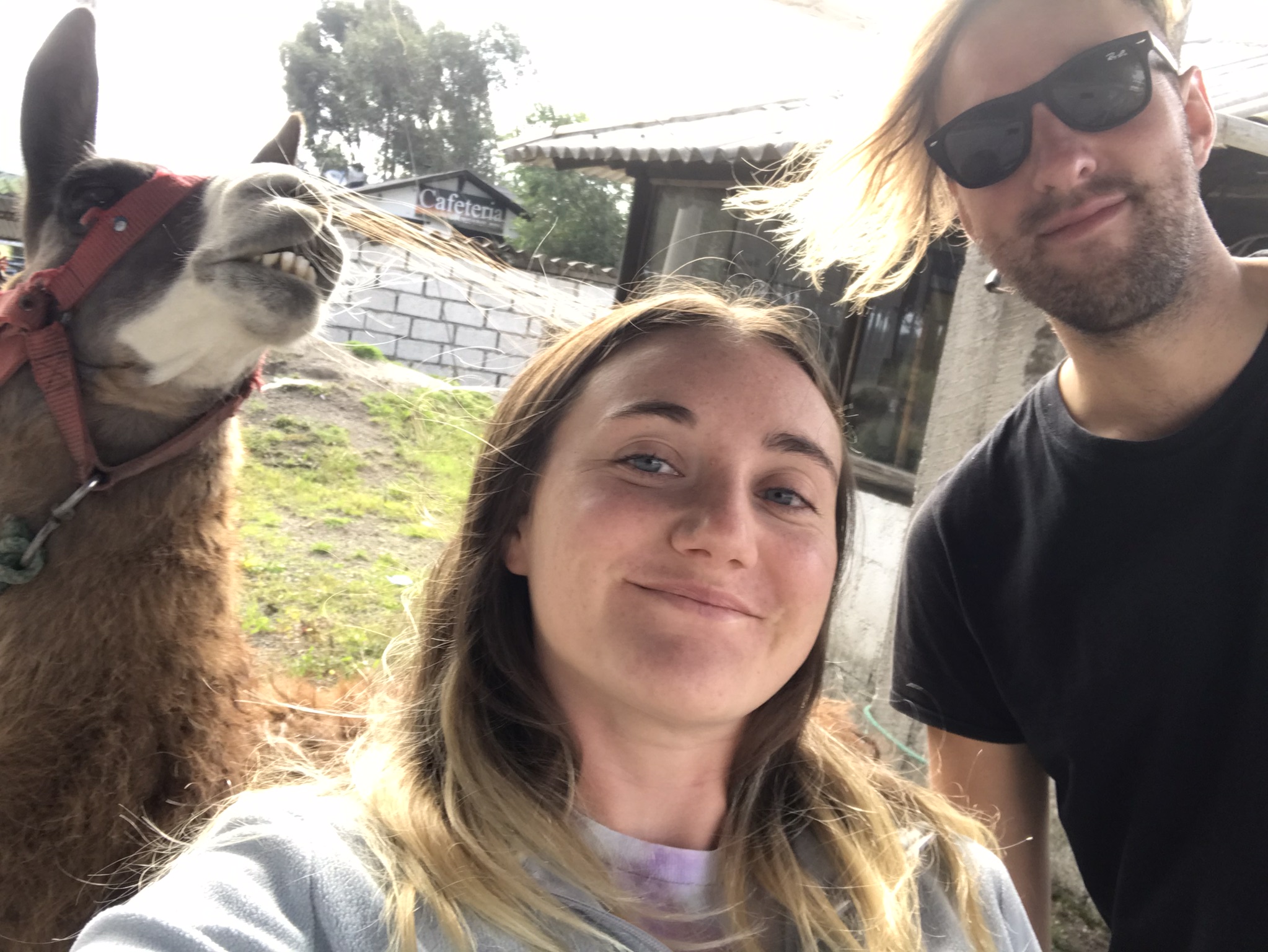
Leave a Reply
You must be logged in to post a comment.